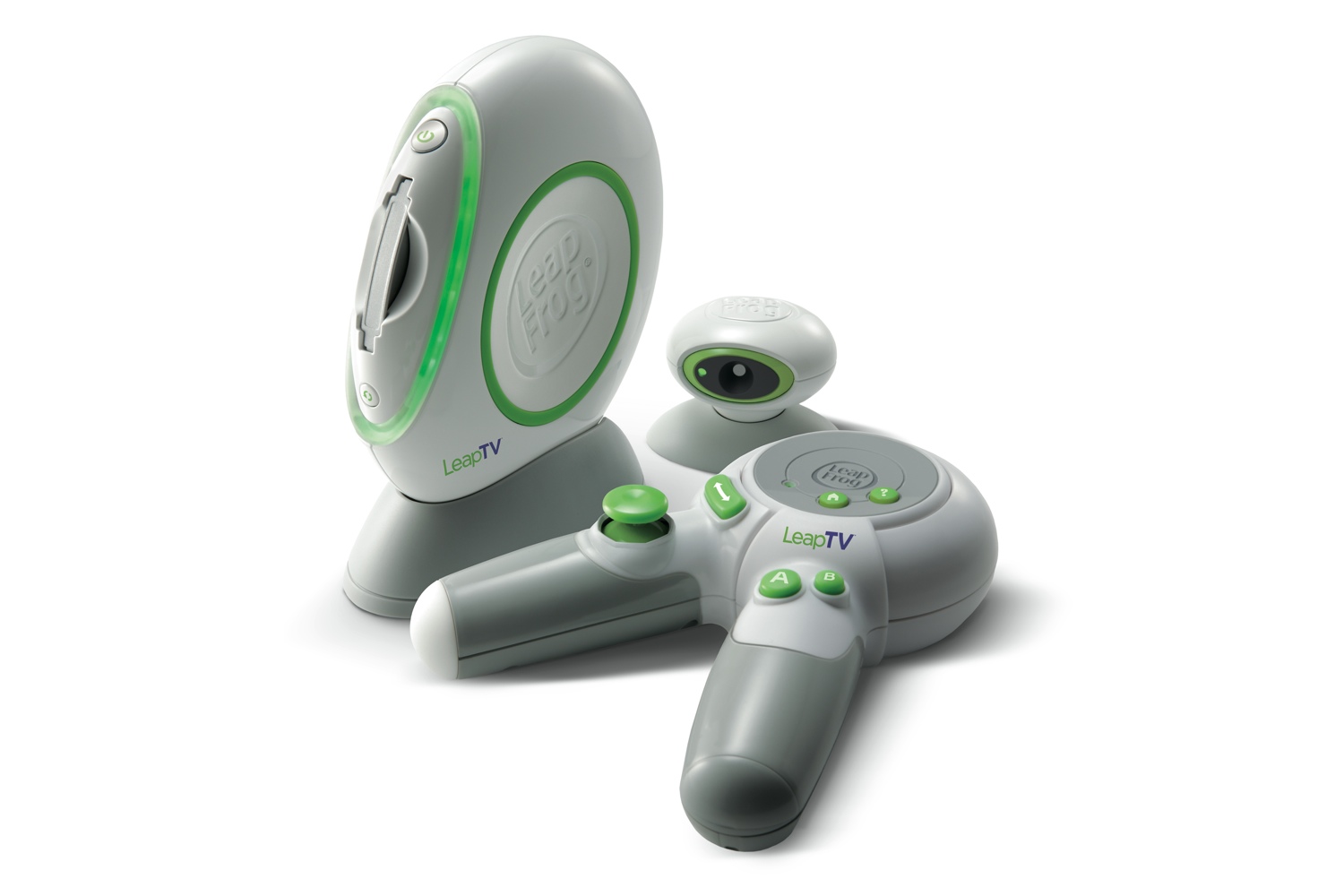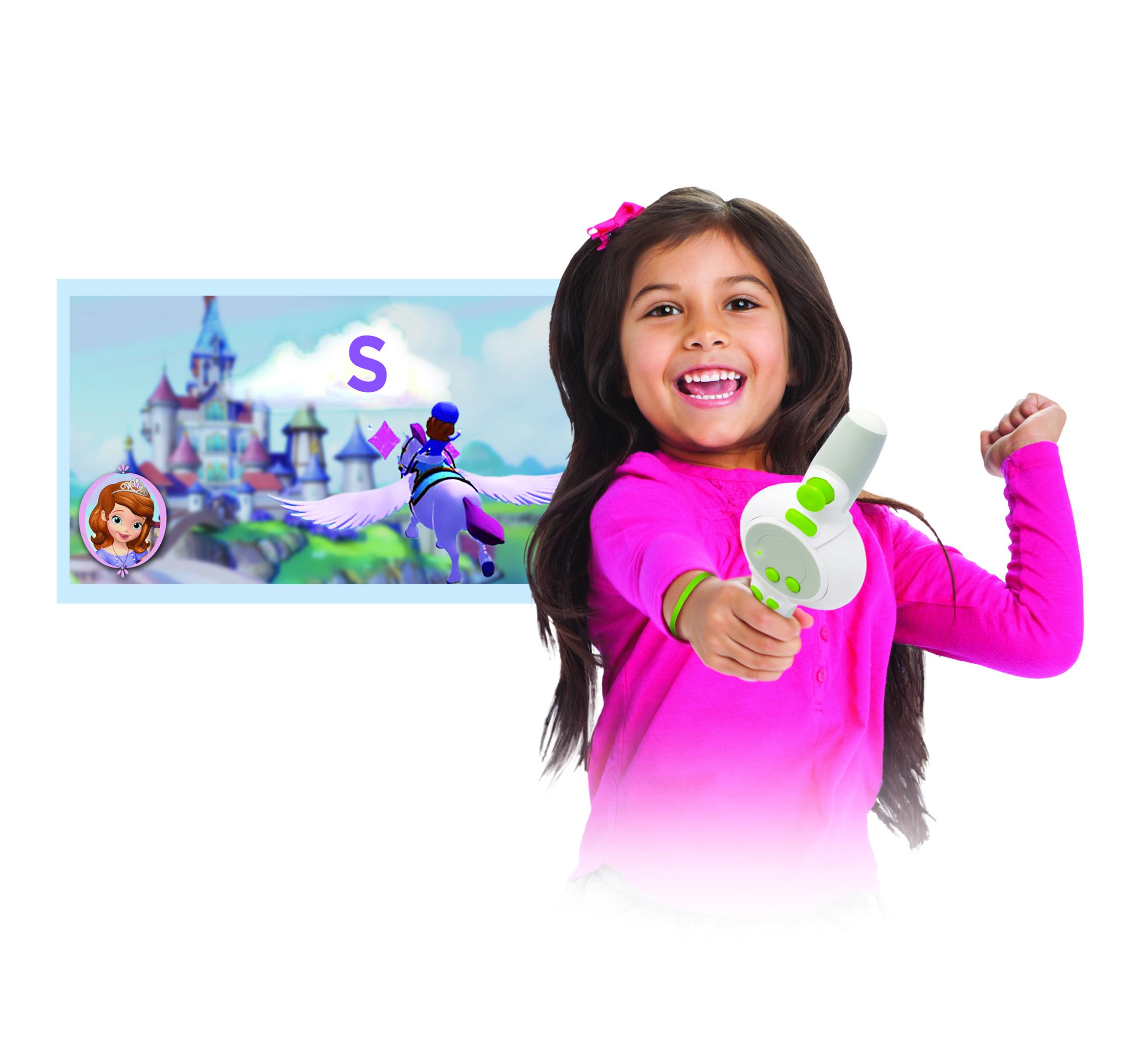LeapFrog, the company you may know for its popular line of computerized children’s toys like My Pal Scout or the Leapster handheld game system, says it’s getting into the video game space in a big way later this year with a new set-top box it’s calling LeapTV.
In short, LeapFrog’s pitching LeapTV as a video game console designed specifically for post-toddlers and pre-tweens.
No, not another musclebound device engineered to spar with the likes of Sony’s PlayStation 4 or Microsoft’s Xbox One, but something nearer Nintendo’s Wii, power-wise, with a similar focus on motion controls.
When I spoke with LeapFrog about LeapTV last week during an online-guided presentation, the spokesperson described LeapTV as an education-oriented games system, where the games adapt to your child’s play abilities. It’s designed to offer reasonably advanced graphics for the age group it’s targeting — 3- to 8-year-olds — while punching financially somewhere between a light and middleweight entertainment box: LeapTV systems will run $150 when they go on sale this holiday.
The idea behind LeapTV sounds simple enough and maybe even a little head-scratchingly obvious: If you’re the parent of young children, aged somewhere between post-toddlerhood and pre-tween, and they’re clamoring to play video games, what do you give them?

Chances are you hand them a tablet or smartphone today. Maybe you curate the content on your own “grownup” game systems (PC, console). Or perhaps you simply hand them a Nintendo 3DS — arguably the de facto child-angled handheld gaming portal at the moment.
But LeapFrog sees a deficit between today’s all-encompassing game systems (including the 3DS) and the sort of kid-friendly, kids-only gaming frontier it views as yet-to-be conquered. Ergo LeapTV, a device it boldly calls “the best first video game experience for children.”
Why introduce a set-top console for kids in 2014? It sounds counterintuitive, given expectations about mobile device growth (tablets are expected to outsell PCs by next year). Besides, LeapFrog already sells a handheld gaming system (Leapster) as well as a tablet (the LeapPad Explorer). Why not double down on those devices?
LeapFrog’s answer is Nintendo-like: because tablets and phones can’t provide the kind of large scale, full-body, fully active experiences living room game systems cater to. Furthermore, the company wants to control the vertical as well as the horizontal: Nintendo builds its own game hardware and software in part because it views gaming as a holistic endeavor. If you want to craft novel experiences soup to nuts, you need to be both the delivery mechanism and the thing it’s delivering.
Take LeapTV’s unusual Bluetooth controller. You wouldn’t mistake it for a Wii Remote or a traditional gamepad, though it harbors DNA from both, supplemented by its own innovative wrinkle: The handlebars are movable, allowing you to transform it from a boomerang-like gamepad you hold with both hands, into a sword-like pointer you swing with one. The intent, says LeapFrog, is to give kids a range of ways to interact with the system’s games while keeping the interface as simple and compact as possible (no dangling Wii Nunchuk cables, in other words). There’s even a Kinect-like angle: LeapTV employs a motion-sensing camera that supports full body tracking with multiple players, too.
When I asked Leap if LeapTV ran Android — the presumptive partner for so many set-top startups these days — the spokesperson told me the operating system is proprietary to LeapFrog. Whether that means proprietary from the ground up or a custom roll of something already extant wasn’t clear, but what is clear is that Leap wants LeapTV to be perceived as a LeapFrog-concocted product, not another adjunct of someone else’s ecosystem.
The device itself is physically unimposing: a squat, frisbee-like gray and neon-green cylinder — it almost looks like a pint-sized UFO — that sits vertically in a small stand and weighs just over a pound. Under the hood, it’s packing a 1GHz processor (manufacturer unidentified), 1 GB of DDR3 memory, 16GB of flash storage, 1 USB port for the 640-by-480 color camera, Ethernet and HDMI ports (it’ll output up to 720p), and 802.11n Wi-Fi. The $150 asking price includes the camera (with an adjustable TV mount), a 6-foot HDMI cable, the controller (it requires AA batteries, and LeapFrog claims 25 hours per cycle) and one downloadable game — something called Pet Play World — that you get after registering the device.
My question, as the parent of a toddler — and doubtless one early childhood researchers are going to have — is how do we know the content on a device like LeapTV meets educational standards? When LeapTV ships, LeapFrog says it’ll offer access to a library of more than 100 game cartridges, game downloads and videos. Questions of quality aside, how are parents supposed to know any of that content’s genuinely educational?
When I asked LeapFrog about this, the spokesperson told me the company has a team of early childhood experts involved from the get-go with every piece of content created for LeapTV. It’s calling all of those apps “educator-approved” and describes LeapTV’s library as a “best‐in‐class educational curriculum.”

That, of course, could mean any number of things. There’s no ESRB-like ratings system for video games in LeapFrog’s 3-to-8 childhood range (the ESRB lumps everything 10-and-under into a generic “Early Childhood” category). You’re essentially taking LeapFrog’s word, and it’s a word even LeapFrog can only give with so much certainty. Longitudinal research into early childhood interaction with video games, much less ones devised for educational purposes, is still in its infancy. As this 2012 Pearson study on gaming in education puts it, “Although there is much theoretical support for the benefits of digital games in learning and education, there is mixed empirical support.” A device like LeapTV, whatever its merits, is setting sail in largely uncharted waters.
On paper, LeapTV sounds alluring: a device that draws upon thousands of skills in subjects like reading, math and science, and where its apps unfold based on your child’s age, then scale their challenges dynamically based on your child’s abilities. And in theory, it could fill a significant, highly specific games-related gap no one’s really tried to yet. The question is how apt LeapFrog’s approach ends up being, and for the answer to that, only time and further research will do.
More Must-Reads from TIME
- Cybersecurity Experts Are Sounding the Alarm on DOGE
- Meet the 2025 Women of the Year
- The Harsh Truth About Disability Inclusion
- Why Do More Young Adults Have Cancer?
- Colman Domingo Leads With Radical Love
- How to Get Better at Doing Things Alone
- Michelle Zauner Stares Down the Darkness
Write to Matt Peckham at matt.peckham@time.com